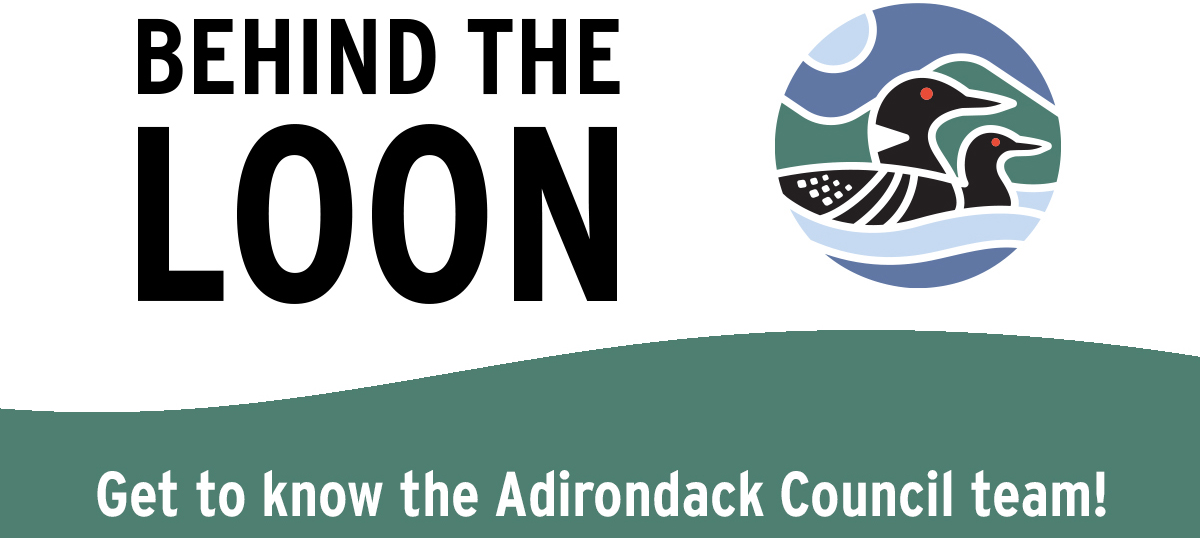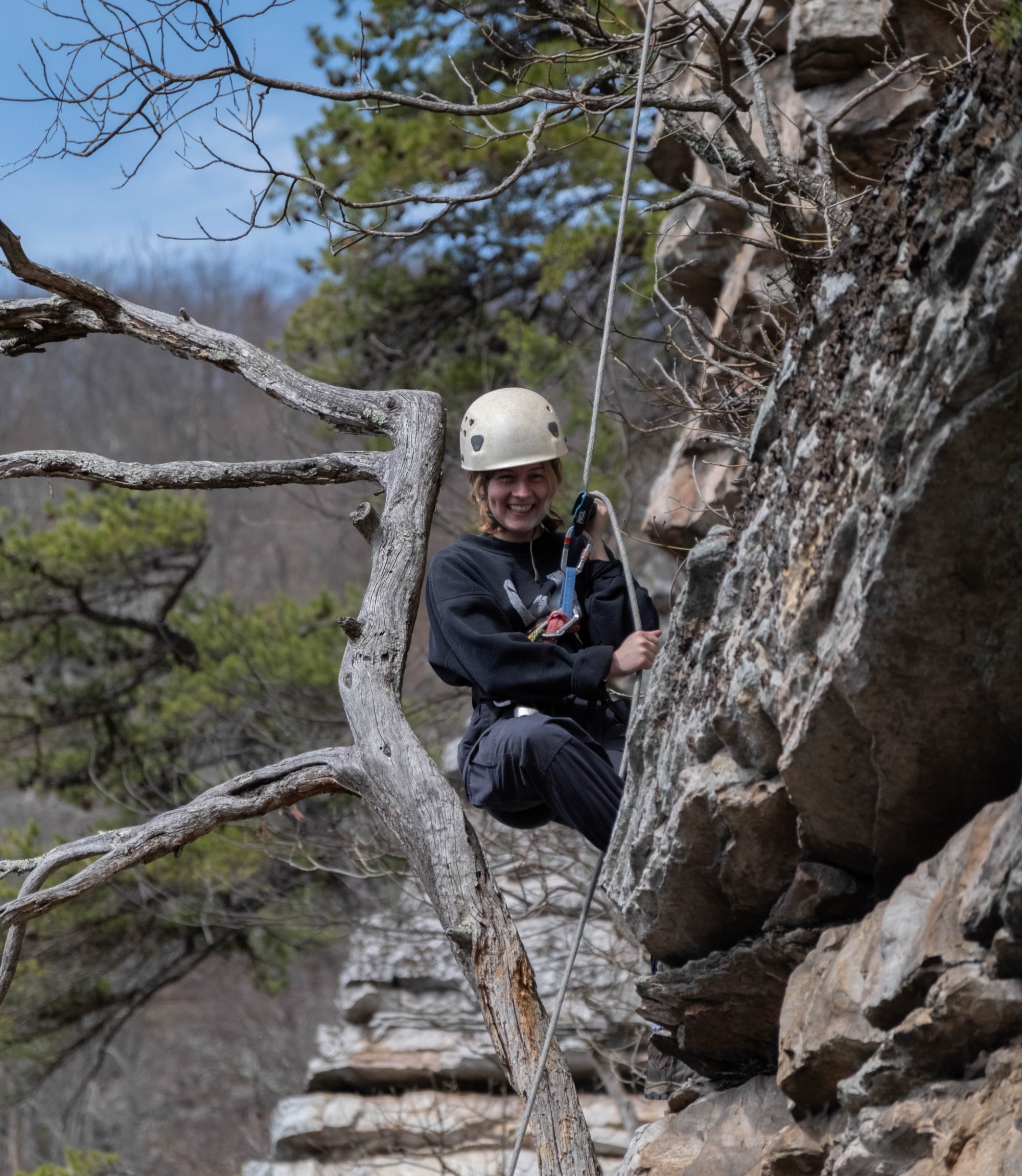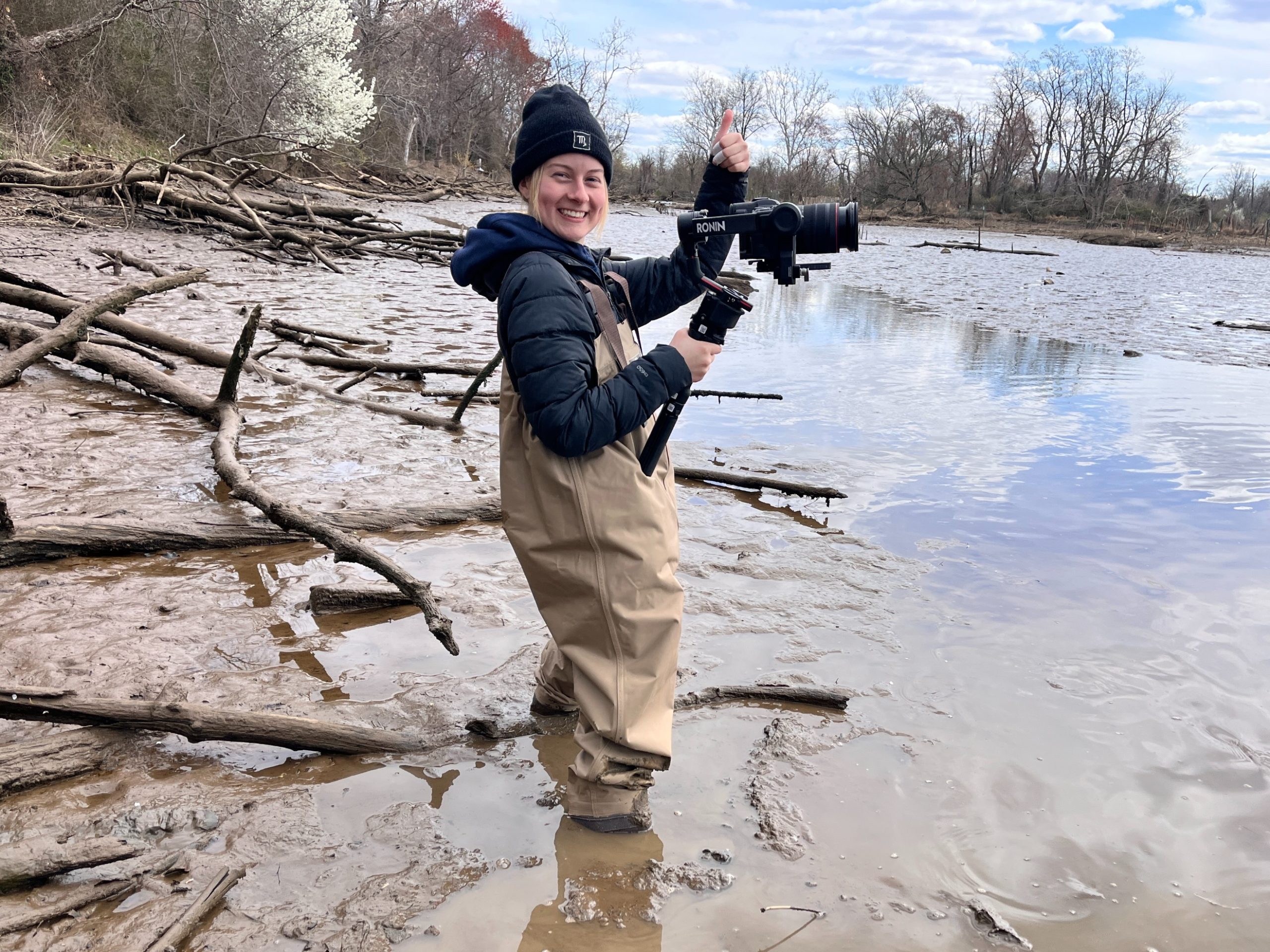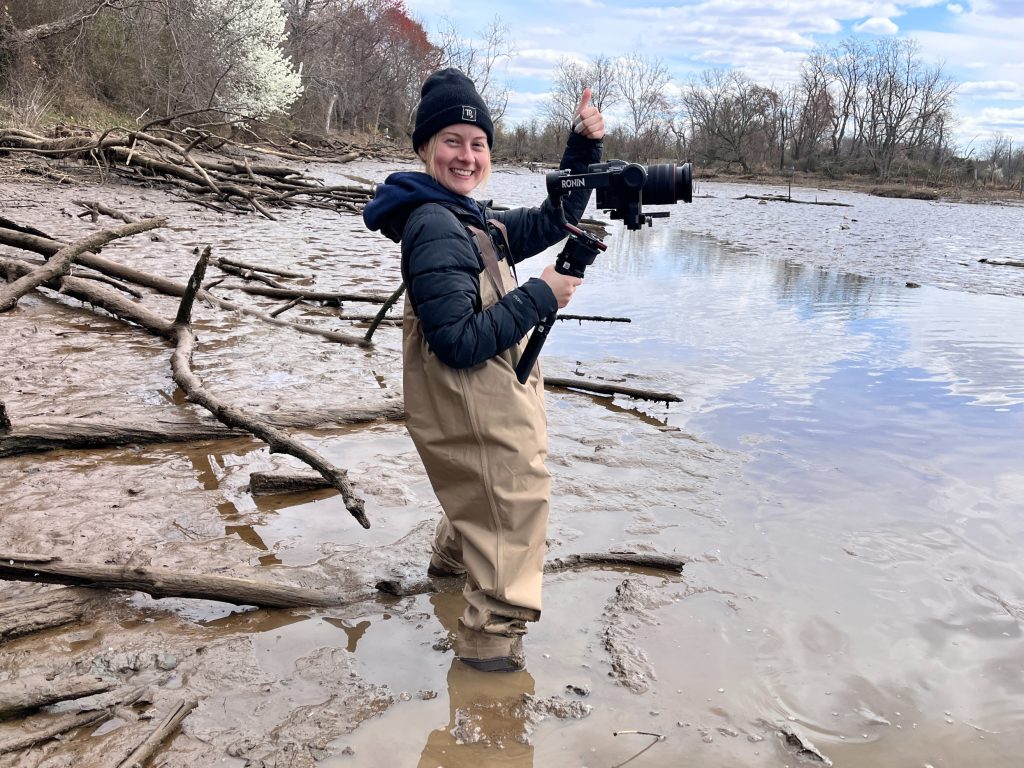By Sarah King – Clarence Petty Communications Intern
Thursday, June 13, 2024

Briefly Describe Your Role At The Council
This summer, I am the Communications Intern working alongside Justin Levine and Elizabeth Rogers to produce content in preparation for the Adirondack Council’s 50th Anniversary next year in 2025. My primary duties will consist of interviewing various individuals across the Adirondacks, recording inspiring stories that will showcase the vast work being done to preserve the park. I feel immensely privileged for the opportunity to listen and learn from those who hold endless knowledge. So many people often work behind the scenes to protect the Park’s integrity so it’s important to extend our gratitude and document their experiences for future generations to look back on.
 Sarah King poses with a camera at the Katahdin Woods and Waters National Monument in Northern Maine
Sarah King poses with a camera at the Katahdin Woods and Waters National Monument in Northern Maine
It’s 5:00 on a Friday and you’re leaving the office for the weekend. Where are you going, what are you doing?
As a non-native of this area and an adventurer at heart, I aim to explore and learn as much as I can about the Adirondacks as possible. I especially love being in high places so you might find me clamoring to the on top of a fire tower, taking in the expansive view of trees and lakes. If I require some relaxation, I’ll go swimming in the ethereal presence of a waterfall. The sound of flowing water is so soothing to the soul. I am excited to immerse myself in the rich history of the Adirondacks through visiting museums that hold key knowledge of human and non-human communities past, present, and future.

Rappelling down a 80 ft cliffside in Shenandoah Valley, Virginia
What’s one thing people don’t know about the Adirondacks, but should?
An avid mountaineer, teacher, naturalist, and physician, Dr. Orra Phelps (1895-1986) made a significant impact on the Adirondacks that is difficult to summarize in a few sentences. Dr. Phelps had extensive knowledge of Adirondack flora, publishing several nature guidebooks. She collected and categorized rare high alpine plant specimens that were at risk of becoming endangered in New York State. In the High Peaks region, she hiked and mapped out a new trail guide, often trying out new undiscovered routes. Dr. Phelps also became the first woman to climb Mt. Marcy in the harsh winter.

Sinking into the mud on a environmental film shoot near the Anacostia River in Washington, D.C.
What is one issue we are engaged in that means a lot to you?
I particularly applaud the Council’s continued efforts to ensure threatened and endangered species within the Park have proper protections that allow them to thrive on lands that support biodiversity. The gray wolf in particular has gained back its federal protections which extend into New York as sightings increase when they disperse from their original territories. Even species such as beavers, songbirds, native fish, and salamanders who may or may not have a particular conservation classification are specifically in need of further efforts of protection.
Looking for more ways to get involved with the Council?

